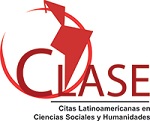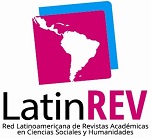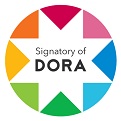Una pedagogía para la comprensión del texto y el pensamiento crítico
DOI:
https://doi.org/10.26490/uncp.horizonteciencia.2020.18.421Abstract
ñawinchay mayay,allip umachakuy,umapiyay lichkaciyNibarintsi katingaro: ogogero nibabasitagantsi, kengagantsi kaninaro, kengagitotagantsi. An educational policy thought, alone, in the mediation, animation and familiarization of reading, is not enough to solve the problem, present, for years, at the low levels of reading comprehension. The purpose of this research is to elucidate the causes that motivate the elementary school student to have little or no understanding of the text, and how, this, has a negative impact on the development of critical thinking. In this sense, it begins by answering a first question, is it possible to teach to understand a text?, and then understand why basic education students do not understand what they read? It ends with a pedagogical proposal that encourages more cognitive activity and not just a simple mediation (didactic sum of reading strategies and techniques) for understanding. For this reason, a theoretical review was made on the benefits of brain stimulation. The research concludes that the understanding of the text and the development of critical thinking do not depend only on the mediation and animation of structured reading, as such, in the Institutional Reading Plan, but to a large extent, its progress is due to cognitive stimulation permanent, centered on a pedagogy of body movement, of the logical and artistic stimulus of the student; especially if you work from an early age.Downloads
References
Ardila, A., Bernal, B., y Rosselli, M. (2016). Área cerebral del lenguaje: una reconsideración
funcional. Neurología, 62(3), 97-106.
Arnaiz, P. (2000). La práctica psicomotriz: una estrategia para aprender y comunicar. Revista
Iberoamericana de Psicomotricidad y Técnicas corporales, (0), 5-13.
Arnheim, Rudolf. (1993). Consideraciones sobre la educación artística. Barcelona: Paidós.
Díez, A., y Egío, V. (2017). La competencia lectora. Una aproximación teórica y práctica para su evaluación, Investigaciones Sobre Lectura, 7, 22-35.
Felipe, A., y Barrios, E. (2017): Evaluación de la competencia lectora de futuros docentes,
Investigaciones Sobre Lectura, 7, 7-21.
Ferri, L. (2015). Cerebelo y lenguaje: intervención logopédica en sus trastornos. Neurología, 60(1) 57-62.
Gallego, C. (2006). Los prerrequisitos lectores. Congreso Internacional de Lectoescritura. Morelia. México: Ectores.
Gil, P., Contreras, O. y Gómez, I. (2008). Habilidades motrices en la infancia y su desarrollo desde una educación física animada. Revista Iberoamericana de Educación, (47), 71-96.
Hernández-Muela, S., Mulas, F., y Mattos, L. (2004). Plasticidad neuronal funcional. Neurología, 38(1), 58-68.
Jiménez, E. (2014). Comprensión lectora VS Competencia lectora: qué son y qué relación existe entre ellas. Investigaciones sobre Lectura, (1), pp. 65-74.
Miedzinski, K. (2000). Educación Psicomotriz-Educación del movimiento. Experiencias en
Sudamérica. Revista Iberoamericana de Psicomotricidad y Técnicas corporales, (0), 25-35.
Muniáin, J., Serrabona, J., Montserrat, C. y Montserrat, D. (2000). Representación verbal en
psicomotricidad de integración. Revista Iberoamericana de Psicomotricidad y Técnicas
Corporales, (0), 85-102.
OCDE. (2017). Marco de Evaluación y de Análisis de PISA para el Desarrollo: Lectura, matemáticas y ciencias, Versión preliminar, OECD Publishing, Paris.
Pérez-Zorrilla, J. (2005). Evaluación de la comprensión lectora: dificultades y limitaciones. Revista de educación, 121-138.
Puente, A. (1999). El cerebro creador. España: Alianza
Rienda, J. y Espinoza, A. (2018). El discurso publicitario y el aprendizaje de la lectura comprensiva. Profesorado. Revista de Currículum y Formación de Profesorado, 22(4), 489-503.
Sánchez, E., y García-Rodicio, H. (2014). Comprensión de textos. Conceptos básicos y avances en la investigación actual, Aula, 20, 83-101.
Segura, M., Sabaté, M. y Caballé, C. (2017). La psicomotricidad, un recurso para la mejora del
grafismo en educación infantil: aportaciones de la psicomotricidad al grafismo. Revista
Iberoamericana de Psicomotricidad y Técnicas corporales, (42), 5-19.
Sellés, P. (2006). Estado actual de la evaluación de los predictores y de las habilidades relacionadas con el desarrollo inicial de la lectura. Aula Abierta, (88), 53-72.
Solé, I. (2006)..Estrategias de lectura. Barcelona: Graó.
Valdés, M. (2000). Pauta para evaluar el juego en la clase de psicomotricidad. Revista
Iberoamericana de Psicomotricidad y Técnicas corporales, (0), 77-84.
Downloads
Published
Issue
Section
License
Copyright (c) 2020 Horizonte de la Ciencia

This work is licensed under a Creative Commons Attribution-NonCommercial 4.0 International License.
















